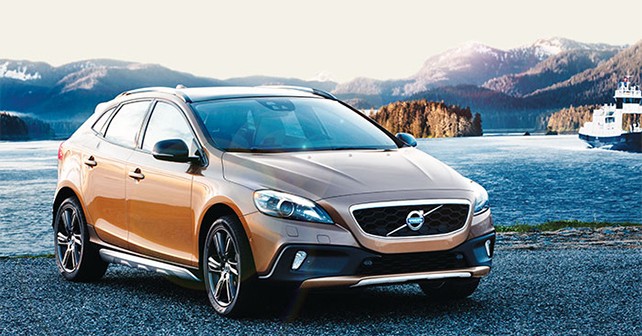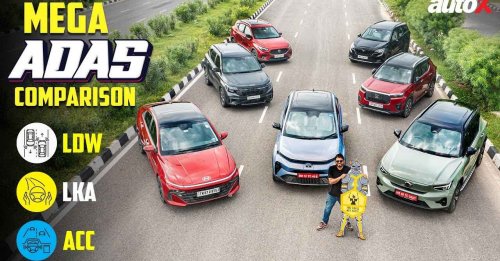
We sit down with Mr Thomas Andersson, the newly appointed Global VP of Volvo Cars, as he gets Candid about how Volvo is moving forward in the world and in India
You’ve been with Volvo for a number of years, and you’ve seen the company change ownership a few times. What are the main differences between Volvo under Ford and Volvo under Geely?
I started in 1991, I have been posted for 15 years outside of Sweden and the last 8 years based in Sweden. I’ve been through 3 periods, the first when Volvo was part of AB Volvo, and thenwe went into the Ford company ownership and were part of their premier automotive group with Jaguar Land Rover and Aston Martin. As of now we have been acting as an independent company under Geely ownership, and that is exciting because it gives us opportunity and responsibility at the same time. Of course we have to finance our own future, we have to make sure we are profitable. We need to make sure we re-invest and take our own decisions when it comes to product cycle plans, and so on. So with huge investments in our future, and looking at new market opportunities,we have an increased focus in India.
You had mentioned Volvo’s R&D in new engine design and 4 cylinder technology, can you tell us a little more about that? Is this new technology being implemented because of stricter Euro emission norms, or because you wish to develop cars for Asian markets?
We see a global trend going in this direction, so we will not base the decision only onwhat’s happening in Europe, although Europe is a very important market for us. We see the same happening in China and we see it happening in the US. We are a niche premium player among mass premium players, and we also need some scale, so scale and efficiency has driven that decision. Because what do we need out of the engines of the future? We need both power and efficiency, and with this new architecture we can get both. And I amconfident that we will get some scale out of that. There are a lot of advantages, and it’s a bold step, and I think we are the first ones to be taking this bold step, but we believe in it.
You’ve developed a new platform from scratch – known as the SPA, which stands for Scalable Platform Architecture – which means that you’ll be able to use if for a number of your sedans and SUV’s, the first of which will be the all-new XC90 next year. How difficult was it to conduct this development process single-handedly?
I can only speak about it from a commercial standpoint because I have not been a part of the development. The development team started quite a few years back thinking what kind of modular and flexible architecture should we have for the future, and then how we can be competitive at the right level in the luxury car segment. We then came to the conclusion that we need to have that competency now and we need to do it on our own, but ofcourse we have supplier partners with us on this journey and we are confident we are on the right track. There are similarities to the engine architecture in the sense that with modularity and flexibility you also create scale, so you can get more out of, you know, less. Again, being a smaller player we have to think modular and flexible, and obtain large scale quantities. We can now create scale in many ways and we can get a competitive advantage. Towards the end of next year this platform will be complete.
The V40 platform is shared with the Ford Focus – the last of your technical arrangements with Ford. You’ve already announced a willingness to share components and systems with prospective partners. Are there discussions taking place with anyone currently?
I’m not sure where we are on this, but we will have to get back to you on this. I know we made a few statements and it is in the making. But let me clarify on one point. Yes, the platform technology from which the V40 Cross Country was developed was originally developed within Ford. Now this is the next generation V40 and we have been independently developing that since we are no longer part of Ford Motor Company. So you will see more differentiation on this product.
You’re boosting investments in the development of electric cars, with the help of Siemens. What kind of role do you think EV’s have in the automotive market overall, and what role does Volvo plan to play in that?
It’s hard to say how this will develop. I don’t think it will take a significant part of the market in the next 10 to 20 years. We already have Volvo EV’s on the road, we have the C30 electric vehicles on the road today, but we have stopped their production. We have the V60 Plug-in hybrid, which is the world’s first diesel plug-in hybrid on the market today and we believethat kind of technology is very competitive. We will see what we can learn from the V60 Hybrid, because it is hugely successful and it’s first year’s production was sold out in a very short time. I think we have good faith in being the first out there and we are looking at that, and learning from that, and then we will see just how to take the next step.
Car sales for Volvo fell in the US, despite the US having its best year in nearly 5 years, while in China sales went up. How challenging is it to sell cars that adhere to everyone’s tastes?
It is challenging but at the same time it is an opportunity to have a strong base in different countries. 5 years ago we sold 5000 cars in China and now we are selling 50,000, and at the same time the US market has been declining for us. With the US we have a different kind of challenge, which is the exchange rate, and so we have to be prudent and we are not going to participate fully in the incentive wars that are taking place there. Then say on a global level to compensate for that we have very strong growth coming out of China, we have strong growth coming out of Sweden, and then we see growth coming from Japan and India, so it’s always going to be like this. Being a global payer means that you are up in one country and down in another, but now what does that do for your product? I think the key is we need to remain true to the Volvo core values and make sure that we use that as a base. We are strong in safety, in our Scandinavian design heritage, in our functionality, and today the XC60 is our globally sold car and it sells as well in every single market around the world. So the market is becoming more global and if you tap into it with a global product like the XC60 you’re doing well.
Do you plan to develop a car specifically for Asian markets?
In China we are making the S80 long wheelbase, and at the same time we need to look at the different customer groups, and clearly in China, in India, the bigger part of the luxury market is chauffeur driven, so I think yes, these things we are learning from the expanding Asian markets, that come into the global product. Combining the right size of cars with the right performance and the right fuel consumption is the key, the trinity, but many big cars around the world where we are strong have a good standing. Definitely we are looking at the Asian markets, the tastes, the needs, the attributes, and we will see what we can bring into our future global cars.
Currently you only bring in vehicles into India as CBU’s.Will we see an assembly line for Volvo cars in India anytime in the near future?
What we have said is that we are focusing on the commercial strategy, building the brand, building the service network, and building up the right partnerships with the right dealers, which is the right thing to do anyway. First we lay our foundation and then we can look at the industry side. So we have no decision on that for the near future.























Write your Comment